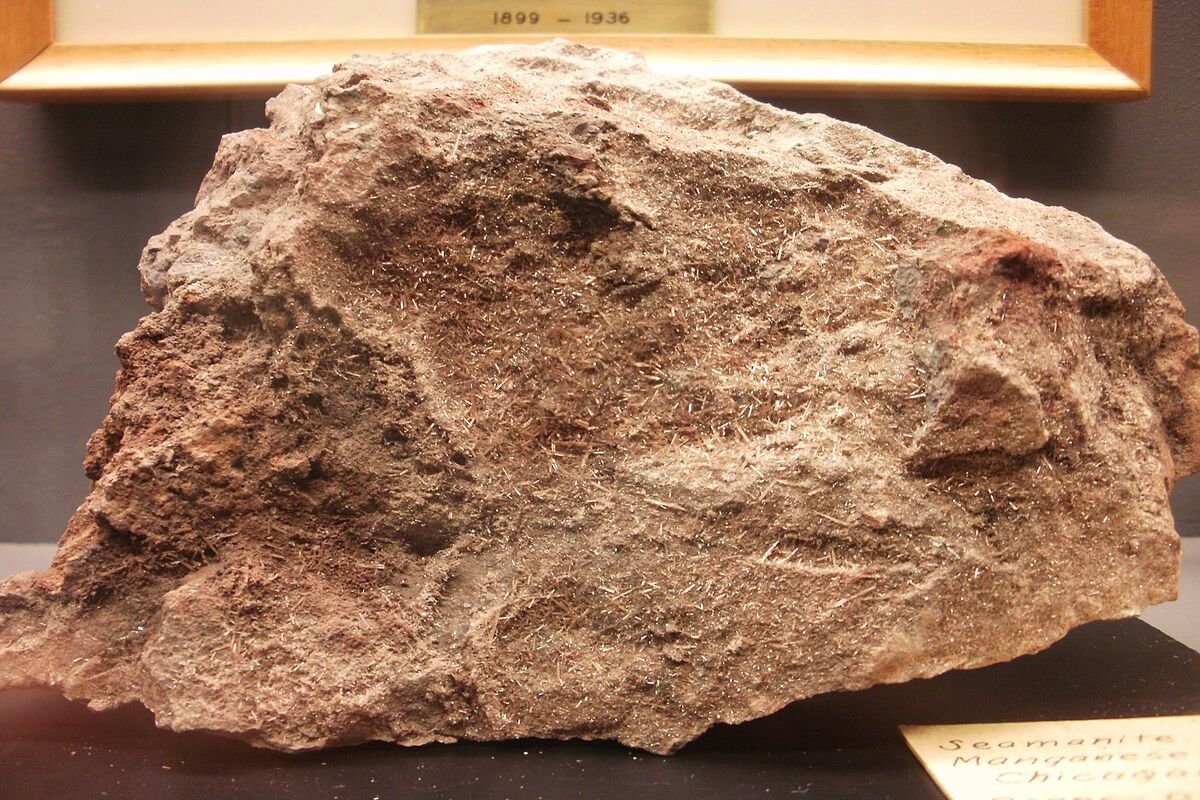
Seamanite might not be a household name, but this rare mineral has a fascinating story. Discovered in 1930, it’s named after the American mineralogist Arthur E. Seaman. Found primarily in Michigan, Seamanite is a phosphate mineral with a unique chemical composition. Its striking yellow to brownish color and crystal structure make it a gem among collectors. But what makes Seamanite truly special? Seamanite forms under specific geological conditions, often in manganese-rich environments. This mineral is not just a pretty face; it also provides valuable insights into the Earth's geological history. Ready to dive into 30 intriguing facts about Seamanite? Let's get started!
Key Takeaways:
- Seamanite is a rare mineral with a yellow to brownish-yellow color, found in Michigan and South Africa. It's used for scientific research, collecting, and educational purposes due to its unique properties.
- Named after geologist Arthur E. Seaman, Seamanite is a rare mineral with distinctive properties. It's primarily used for scientific research and is a popular specimen for mineral enthusiasts and collectors.
What is Seamanite?
Seamanite is a rare mineral that captures the interest of geologists and mineral enthusiasts alike. Its unique properties and limited occurrence make it a fascinating subject for study. Here are some intriguing facts about this mineral.
- Seamanite is named after Arthur E. Seaman, a prominent American geologist.
- It was first discovered in the Iron County of Michigan, USA.
- This mineral is part of the borate group, which includes minerals containing boron.
- Seamanite has a yellow to brownish-yellow color, making it visually distinctive.
- It forms in the triclinic crystal system, which is one of the seven crystal systems in mineralogy.
- The mineral's chemical formula is Mn3(PO4)(BO3)(OH)3.
- Seamanite has a hardness of 4.5 on the Mohs scale, making it relatively soft.
- It exhibits a vitreous to resinous luster, giving it a shiny appearance.
- The mineral is transparent to translucent, allowing light to pass through it to varying degrees.
- Seamanite is often found in association with other minerals like rhodochrosite and quartz.
Where Can You Find Seamanite?
Seamanite is not a common mineral, and its occurrences are limited to specific locations. Here are some facts about where you can find it.
- The primary location for Seamanite is the Iron County in Michigan.
- It has also been found in the Kalahari Manganese Field in South Africa.
- Seamanite is typically found in manganese-rich deposits, which are areas with high concentrations of manganese.
- The mineral is often located in hydrothermal veins, which are fractures in rocks filled with mineral-rich water.
- Seamanite can also be found in metamorphic rocks, which are rocks that have been altered by heat and pressure.
Unique Properties of Seamanite
Seamanite has several unique properties that make it stand out among other minerals. Here are some facts about its distinctive characteristics.
- Seamanite has a specific gravity of 3.4, which is a measure of its density.
- The mineral is brittle, meaning it can easily break or crumble.
- Seamanite exhibits pleochroism, which means it can show different colors when viewed from different angles.
- It has a perfect cleavage in one direction, which refers to its ability to split along specific planes.
- Seamanite is fluorescent under ultraviolet light, glowing a bright yellow color.
Uses and Applications of Seamanite
While Seamanite is not widely used in commercial applications, it has some interesting uses and applications. Here are some facts about how it is utilized.
- Seamanite is primarily used for scientific research due to its rarity and unique properties.
- It is a popular specimen for mineral collectors and enthusiasts.
- The mineral is sometimes used in educational settings to teach students about mineralogy and geology.
- Seamanite can be used in gemology for studying the properties of gemstones.
- It is occasionally used in decorative items and jewelry, although its softness makes it less ideal for this purpose.
Interesting Tidbits About Seamanite
Here are some additional interesting facts about Seamanite that you might find fascinating.
- Seamanite was first described in 1930 by geologist Arthur E. Seaman.
- The mineral is named in honor of Seaman's contributions to the field of geology.
- Seamanite is considered a rare mineral, with only a few known occurrences worldwide.
- The mineral's unique properties make it a subject of ongoing research in the field of mineralogy.
- Seamanite is often featured in mineral exhibitions and museums due to its rarity and distinctive appearance.
The Fascinating World of Seamanite
Seamanite, a rare and captivating mineral, holds a unique place in the world of geology. Its striking yellow hue and complex crystal structure make it a favorite among collectors and scientists alike. Found primarily in the United States, this mineral's rarity adds to its allure.
Beyond its beauty, seamanite offers valuable insights into geological processes. Its formation involves specific conditions, making it a key indicator of certain environmental factors. This makes it not just a collector's item but also a subject of scientific interest.
Whether you're a seasoned geologist or a curious enthusiast, seamanite's story is one worth exploring. Its rarity, beauty, and scientific significance make it a gem in the truest sense. So next time you come across this mineral, remember the fascinating facts that make seamanite truly special.
Frequently Asked Questions
Was this page helpful?
Our commitment to delivering trustworthy and engaging content is at the heart of what we do. Each fact on our site is contributed by real users like you, bringing a wealth of diverse insights and information. To ensure the highest standards of accuracy and reliability, our dedicated editors meticulously review each submission. This process guarantees that the facts we share are not only fascinating but also credible. Trust in our commitment to quality and authenticity as you explore and learn with us.
